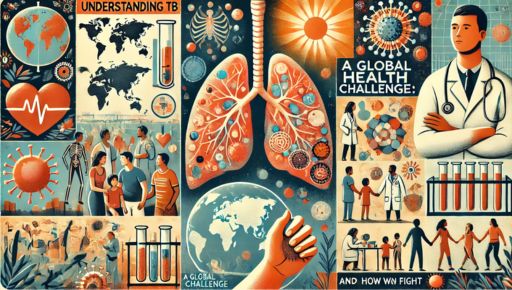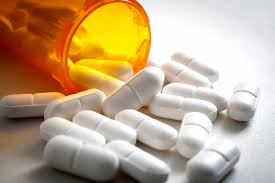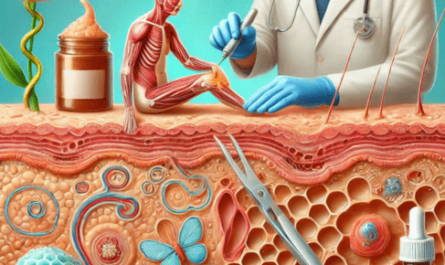
Tuberculosis, commonly known as TB, is a contagious disease that primarily affects the lungs but can also impact other parts of the body. It is caused by a bacterium called Mycobacterium tuberculosis. TB remains one of the top global health threats, affecting millions of people every year. Despite being preventable and treatable, TB continues to pose a significant challenge to global health, particularly in low- and middle-income countries.
This article will explore what TB is, its symptoms, how it spreads, its global impact, and the efforts being made to eradicate this deadly disease. Understanding TB is crucial not only for medical professionals but for the general public as well, as awareness plays a key role in reducing transmission and ultimately controlling its spread.
What is TB?
Tuberculosis (TB) is an infectious disease caused by the Mycobacterium tuberculosis bacteria. The disease primarily targets the lungs, leading to a condition called pulmonary tuberculosis. However, TB can affect other organs like the kidneys, spine, and brain, a condition referred to as extrapulmonary TB.
TB spreads when a person with active pulmonary TB coughs, sneezes, or talks, releasing tiny droplets containing the bacteria into the air. These droplets can be inhaled by people nearby, potentially leading to new infections. While TB is highly contagious, not everyone who is exposed to the bacteria will develop active TB. The immune system of some individuals may prevent the bacteria from multiplying, leading to latent TB, which does not cause symptoms but can become active later.
TB Symptoms: Recognizing the Warning Signs
The symptoms of TB vary depending on whether the disease is active or latent. Active TB presents with the following common symptoms:
- Persistent cough lasting more than three weeks, often accompanied by blood or sputum
- Unexplained weight loss
- Fever and chills
- Night sweats
- Fatigue and weakness
- Chest pain or difficulty breathing
If you experience any of these symptoms, particularly if you have been in close contact with someone diagnosed with TB or have traveled to areas where TB is common, it is essential to seek medical advice. Early detection and treatment of TB can prevent its spread and save lives.
How Does TB Spread?
TB is primarily spread through the air when a person with active TB coughs, sneezes, speaks, or even sings. The bacteria are released in tiny droplets that can linger in the air for several hours, especially in poorly ventilated spaces. People who are in close contact with someone who has active TB are at a higher risk of contracting the disease.
However, TB is not spread by casual contact, such as shaking hands, sharing food or drinks, or touching objects. The risk of transmission is highest in confined spaces where people spend long periods together, like households, workplaces, and healthcare settings.
It’s important to note that while people with latent TB are infected with the bacteria, they cannot transmit the disease to others. However, if their immune system weakens, they may develop active TB and become contagious.
The Global Impact of TB
TB remains one of the leading causes of death worldwide. According to the World Health Organization (WHO), in 2020, an estimated 10 million people fell ill with TB, and 1.5 million people died from the disease. The vast majority of TB cases are found in low- and middle-income countries, where access to healthcare is limited, and the prevalence of risk factors such as malnutrition, HIV/AIDS, and poor living conditions are higher.
Some of the countries with the highest burden of TB include India, China, Indonesia, the Philippines, Pakistan, Nigeria, Bangladesh, and South Africa. These countries account for nearly two-thirds of the world’s TB cases.
Despite the availability of effective treatments, challenges remain in controlling TB globally. Factors such as the rise of drug-resistant TB, limited access to healthcare, poor awareness, and the stigma surrounding the disease contribute to the ongoing TB epidemic.
Drug-Resistant TB: A Growing Concern
In recent years, the emergence of drug-resistant TB has become a significant concern. Multidrug-resistant tuberculosis (MDR-TB) is a form of TB that is resistant to at least two of the most commonly used anti-TB drugs, isoniazid and rifampin. Extensively drug-resistant tuberculosis (XDR-TB) is a more severe form, resistant to several first-line and second-line drugs.
Drug-resistant TB arises when patients do not complete their full course of treatment, either due to a lack of access to medications, poor adherence to prescribed regimens, or incorrect treatment practices. This makes the disease harder to treat, longer to manage, and more expensive to control.
The global health community has made significant efforts to combat drug-resistant TB, but this growing challenge remains a substantial barrier to TB eradication. New medications and treatment regimens are being developed, but they are often costly and not always accessible in low-resource settings.
How is TB Diagnosed?
TB diagnosis typically involves a combination of medical history, physical examination, and laboratory tests. The following are common methods used to diagnose TB:
- Tuberculin Skin Test (TST): A small amount of TB protein is injected under the skin. If the person has been exposed to the bacteria, their skin will react by swelling.
- Chest X-ray: An X-ray can detect changes in the lungs caused by TB, such as lesions or scarring.
- Sputum Smear Microscopy: A sample of mucus from the lungs is analyzed for the presence of Mycobacterium tuberculosis.
- GeneXpert Test: A molecular test that quickly detects TB and drug resistance, including MDR-TB.
- Culture Test: This is the most accurate way to diagnose TB, though it can take several weeks for results.
Diagnosing TB early is critical for controlling its spread. Regular screening and prompt treatment are essential, particularly in high-risk populations such as healthcare workers, people living with HIV, and individuals in crowded living conditions.
TB Treatment: Effective but Challenging
TB is treatable with a combination of antibiotics, typically a regimen known as the directly observed treatment short-course (DOTS). This regimen includes several drugs taken over a course of six to nine months. Adherence to the full course of treatment is crucial to ensure the bacteria are completely eradicated from the body and to prevent the development of drug-resistant strains.
For drug-resistant TB, longer and more complex treatment regimens are required. These treatments often involve second-line drugs, which can have more severe side effects and longer durations. The treatment for XDR-TB may take up to two years and requires careful management by experienced healthcare providers.
While TB treatment is effective, it is challenging due to the long duration, potential side effects, and the need for strict adherence. In addition, limited access to treatment in low-income settings can contribute to higher mortality rates.
The Role of Prevention in TB Control
Preventing the spread of TB is just as important as treatment. The following strategies are essential for TB prevention:
- Vaccination: The Bacillus Calmette-Guérin (BCG) vaccine is given to infants in high-risk areas to protect against severe forms of TB, particularly in young children.
- Improved Ventilation: Ensuring that living and working spaces are well-ventilated helps reduce the concentration of TB bacteria in the air.
- Infection Control in Healthcare Settings: Health workers must take precautions to prevent the spread of TB, including using masks and ensuring proper isolation of infected patients.
- Education and Awareness: Educating people about TB, its symptoms, and the importance of seeking medical help early can help reduce stigma and encourage early detection.
Moving Towards a TB-Free World
While TB remains a significant global health challenge, efforts to control and eventually eliminate the disease are progressing. The WHO’s End TB Strategy, launched in 2015, aims to reduce TB deaths by 95% by 2035, with a focus on improving access to treatment, addressing drug resistance, and reducing the stigma associated with the disease.
Through global collaboration, improved healthcare access, and continued research, it is possible to combat TB and eventually eradicate it as a public health threat. Awareness, early diagnosis, and effective treatment will play a critical role in achieving this goal.
Conclusion
TB is a preventable and treatable disease, yet it continues to affect millions of people worldwide. Through early detection, effective treatment, and global efforts to combat drug-resistant strains, we can reduce the impact of TB and work towards a world free of this deadly disease. Continued education, better access to healthcare, and improved living conditions are essential to achieving this goal. By working together, we can fight TB and ensure a healthier future for all.



